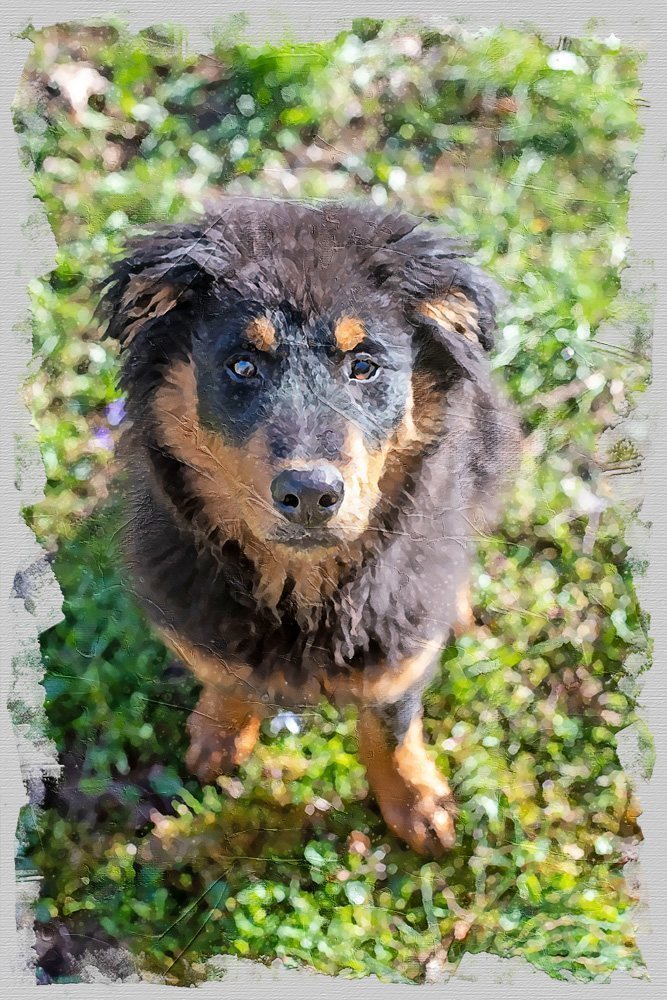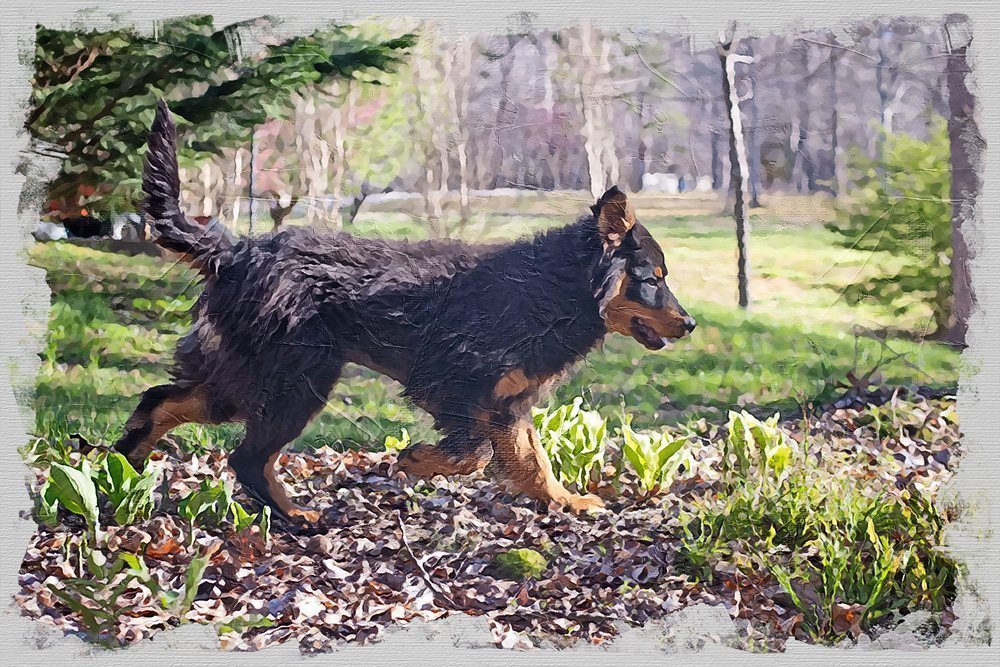Up until 16 weeks of age, most of my puppy curriculum consists of manding, marker training and recall. Two weeks ago, Shep and his sister graduated to accompanying me for morning goat chores. Between their 16th and 18th weeks, I alternated Shep and Sally each day. At dawn, we take the goats from the barnyard to the pasture. We spend about thirty minutes in the pasture, keeping the herd together but mostly staying back a few dozen feet so the goats can freely ruminate on the spring’s new growth. Together, the dog and I push them slowly around the perimeter of the clearing. At first, the pups were on long lead, but that is no longer necessary all the time. When 30 minutes’ time is up, we put the goats back to the barnyard. After two weeks, both Shep and his sister Sally will follow the goat herd from the pasture, down the chert road that winds through the woods, across the orchard’s hill, and then back to the barnyard. The herd and the dog arrive back at the barnyard’s gate about 30 seconds before me. For that half-minute, either Shep or his sister will stand in the open gateway, holding the goats in the barnyard until I reward them with a milk bone. Standing at the gate and holding the goats was not trained. Each dog offered the behavior on his or her own. Shep has a little more natural ability than Sally, and a softer but stronger touch. But that’s not to sell Sally short at all. But both pups are exceeding my expectations. I’m very happy with the results of pairing Sallee’s Rustie Jr with Sherling’s Jill. All the owners I’ve spoken with are also happy with their Rusty x Jill farm dogs. Credit is due to John Sherling for the pairing.


